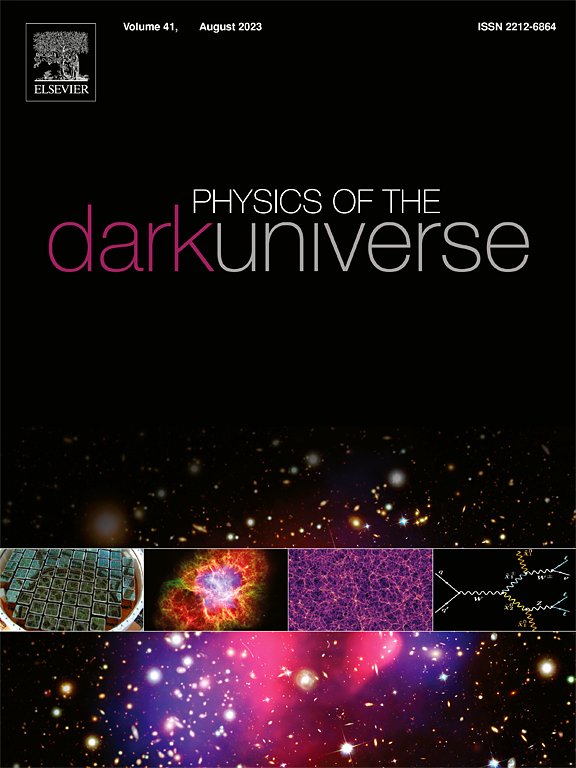Preheating and gravitational waves production in hybrid metric-Palatini model
IF 5
2区 物理与天体物理
Q1 ASTRONOMY & ASTROPHYSICS
引用次数: 0
Abstract
In this study, we investigate the preheating era and the production of gravitational waves during this stage within the Higgs inflation hybrid metric-Palatini framework. In this setup, the Higgs field is supposed to be non-minimally coupled to the Palatini curvature through the coupling constant . To study the evolution of the preheating process in terms of the reheating, characterized by the equation of state , and inflationary parameters, we use a parameter , which characterizes this process by relating the energy density at the end of inflation to the preheating one. We establish a link between gravitational wave density, preheating duration, and the spectral index by considering different specific values of the gravitational wave density spectrum. Additionally, we compare our results with the sensitivity curves of future experiments, analyzing the impact of preheating duration and the equation of state on the gravitational wave spectrum. We find that the Higgs hybrid metric-Palatini model can effectively explain both preheating and the production of gravitational waves during this era, with results that consistently agree with Planck data in the case where the coupling constant , the equation of state and the parameter or .
求助全文
约1分钟内获得全文
求助全文
来源期刊

Physics of the Dark Universe
ASTRONOMY & ASTROPHYSICS-
CiteScore
9.60
自引率
7.30%
发文量
118
审稿时长
61 days
期刊介绍:
Physics of the Dark Universe is an innovative online-only journal that offers rapid publication of peer-reviewed, original research articles considered of high scientific impact.
The journal is focused on the understanding of Dark Matter, Dark Energy, Early Universe, gravitational waves and neutrinos, covering all theoretical, experimental and phenomenological aspects.
 求助内容:
求助内容: 应助结果提醒方式:
应助结果提醒方式:


